DENTITION AND DENTAL CARE
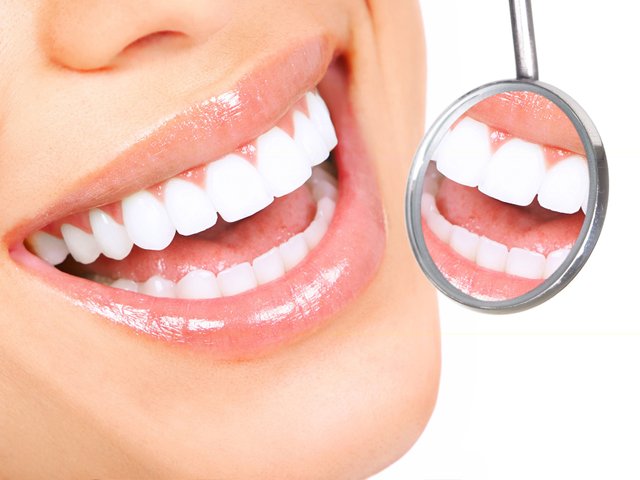 imagesource
imagesource
What really inspired me of writing this post is to educate you guys about our teeths since it's one of the essential part of the body. So what is dentition; Dentition refers to the number, arrangement and conformation of teeth in an organism.
TYPES OF DENTITION
- Homodont dentition: In this type of dentition, the organisms have the same type of teeth. No set of teeth is specialised for any function. All the teeth are of the same shape, size and functions. Examples of homodont dentition are found in fishes, amphibians and reptiles.
- Heterodent dentition: In this type of dentition, the organisms possess teeth of different shapes, sizes and functions.
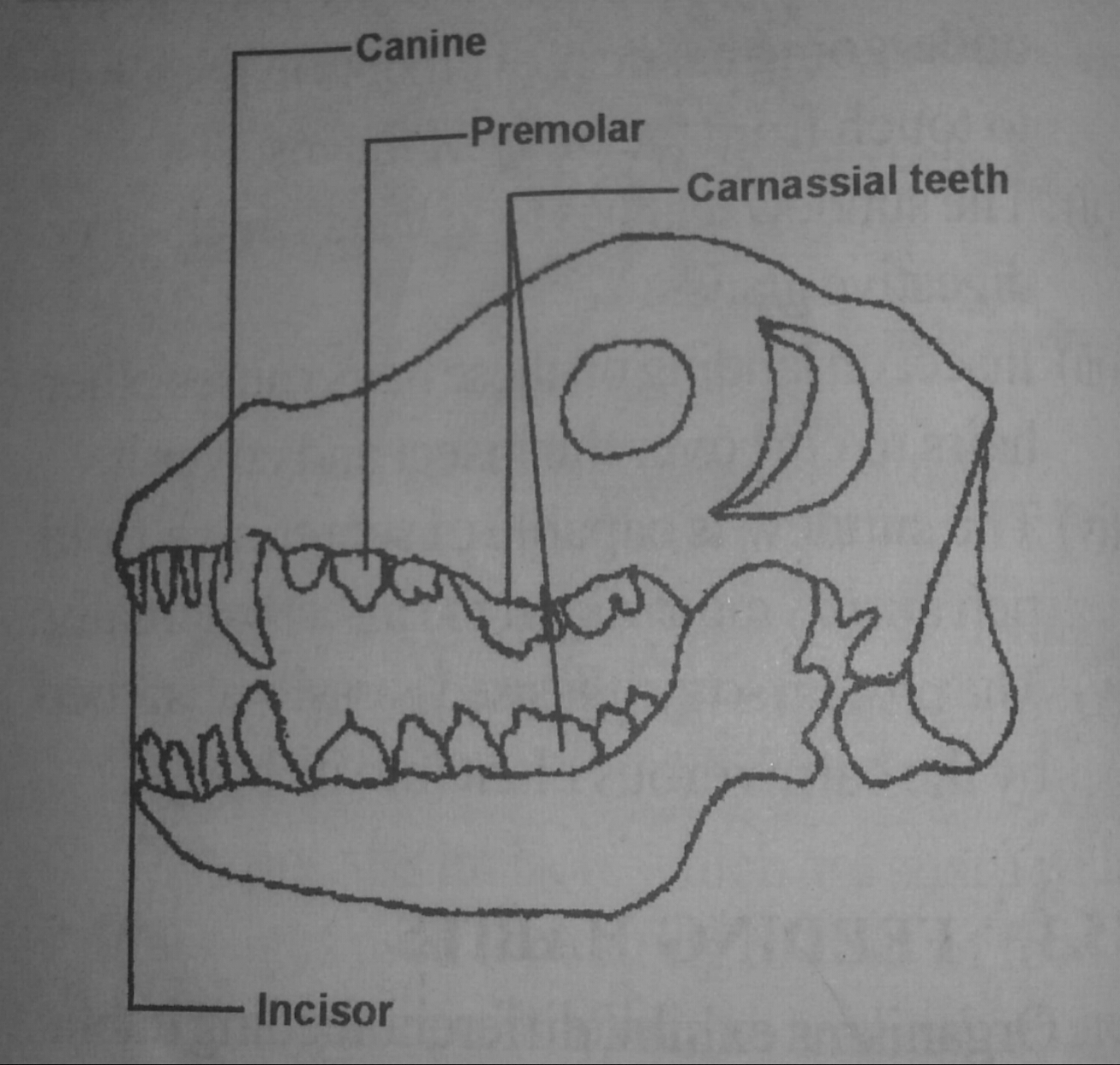 [jaw of rabbit showing types of teeth]
[jaw of rabbit showing types of teeth]
Examples of organisms having heterodont dentition are mammals, e.g rabbits, man, dog, cattle etc. The mammals generally have four different types of teeth. These are incisors, canines, premolars and molars. The type of teeth possessed by an animal is closely related to the type of food it eats. Mammals again have two sets of teeth. These are milk teeth and permanent teeth.
Milk Teeth:> This is the set of teeth possessed by the young ones (i.e. children in the case of human) and it is made up of incisor, canine and premolar teeth (i.e. without molar). It is common among the young ones and may number up to twenty and later fall off to be replaced by the permanent teeth.
Permanent Teeth> This is the set of teeth possessed by adult mammals and are usually four types. These are incisor, canine, premolar and molar teeth. They remain till old age and may number up to 32 in man.
Types of Teeth
There are four types of teeth in mammals. These are incisors, canines, premolars and molars.
- Incisors: These are located in the front of the jaw. They are flat, chisel-shaped with a sharp edge used for cutting and holding on to the prey so that they do not escape.
- Canines: They are found next to incisors. They are sharp and pointed at the tips. Canines are used for tearing flesh and for catching the prey.
- Premolars : Premolars are located at the back of the jaw following the canines. They have large, ridged flat surfaces or cusps used for grinding and chewing of food.
- Molars: They are located at the extreme back of the jaws. They are closely packed with ridged surfaces. They are used for chewing and grinding of food.
Structure of a Tooth
A typical tooth such as the canine or incisor is made up of three regions which are the crown, the neck and the root.
- The crown is the part of the tooth that is above the gum.
- The root is the part of tooth that is embedded in the socket of the gum.
- The neck is the narrow junction between the crown and the root.
Incisors and canine have one root each while premolars and molars may have two or three roots each.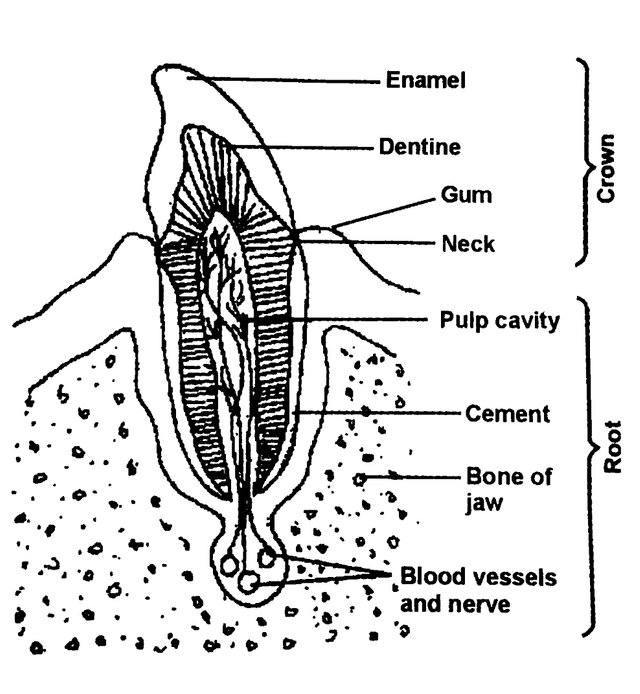 structure through a tooth
structure through a tooth
Starting with the external part, the tooth consists of enamel which is manufactured by special cells of the gum.
Enamel> is a very hard, non-living substance containing calcium salts. It protects the dentine and the pulp cavity and form an efficient hard biting surface.
Dental formula
The dental formula refers to the numbers and types of teeth present in the mouth of an animal. The numbers and types of teeth present in the jaw of an animal is a reflection of special adaptation of mammalian teeth for feeding.
Adaptation of Mammalian Teeth for feeding
I will only talk about the teeth of man and dog;
The Teeth of Man
The dental formula of man is i=2/2, c=1/1, p=2/2, m=3/3 total of 16 up and 16 down to sum up to 32
where i-incisors, c-canine, m-molar, p-premolar.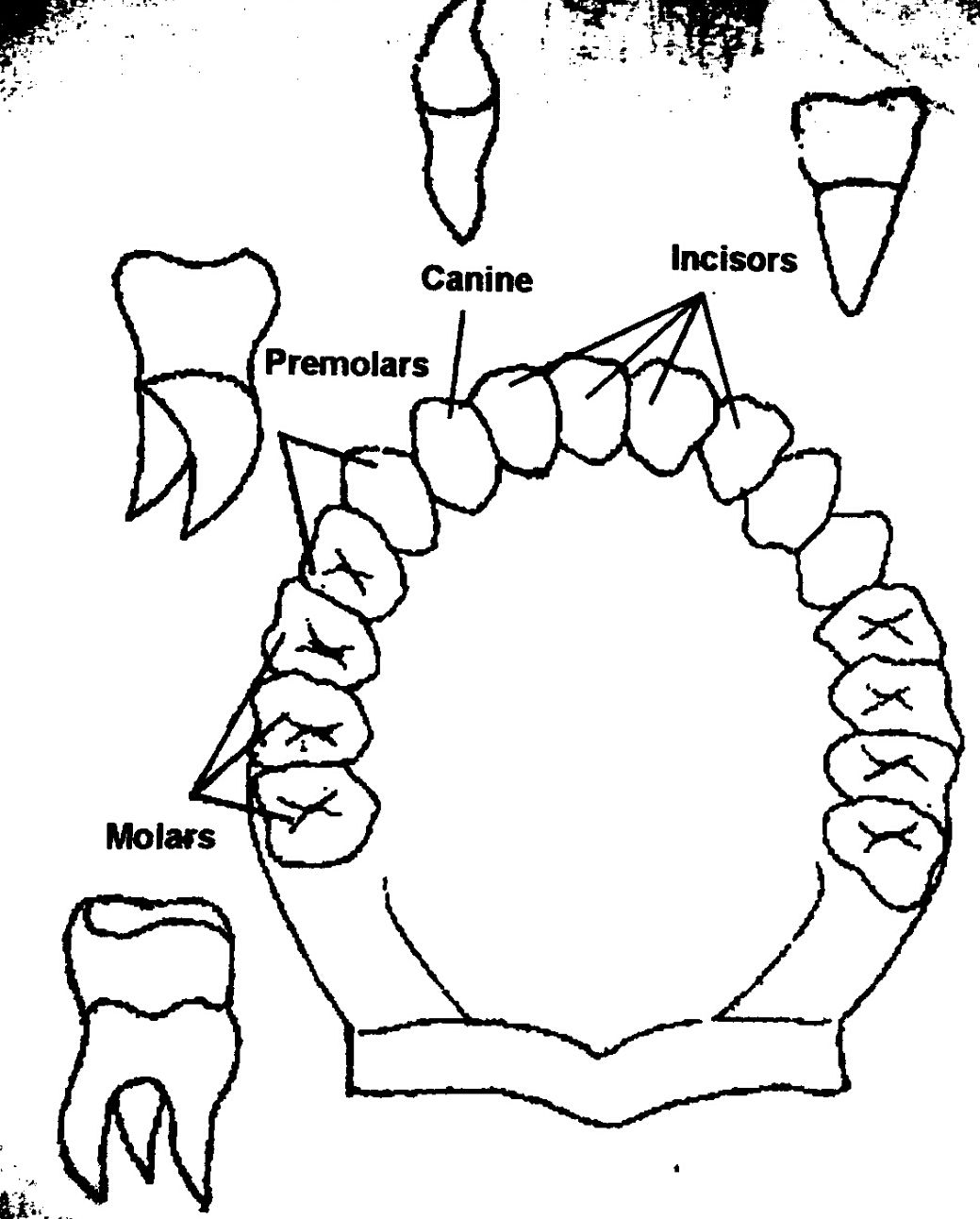 dentition of man
dentition of man
Man is an omnivore, i.e. man feeds on both flesh and vegetables and the teeth, 32 in number as shown above is adapted to the kind of diet it feeds on.
- Incisors are sharp and broad for cutting food.
- Canines are bluntly pointed and are used for gripping and tearing of food.
- Premolars and molars have strong cusps for chewing and grinding of food.
The teeth of Dog
The dental formula of dog is i=3/3, c=1/1, p=4/4, m=2/3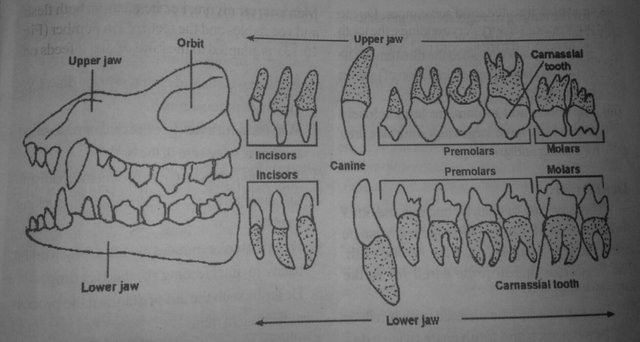 dentition of dog
dentition of dog
Dog is a carnivorous animal i.e. it's feeds on flesh hence it's teeth, 42 as shown above is adapted to the kind of food it eats.
- Incisors which are small and pointed are used fir cutting small pieces of meat from bones.
- Canines are long, curved large and pointed. They are used for attack, defence as well as allowing animal to seize it's prey and tear off flesh from bonea.
- Premolars and molars are broad and thick. The last premolar in the upper jaw and the first molar in the lower jaw are large and modified to form carnassial teeth. They possess sharp cutting edges which are used to cut up meat and tears it away from bones. They arr used to cut up meat and tear it away from bones. They are used also for cracking. Premolars and moalrs are cusped, Blunt with flat surfaces used mainly for grinding and cutting.
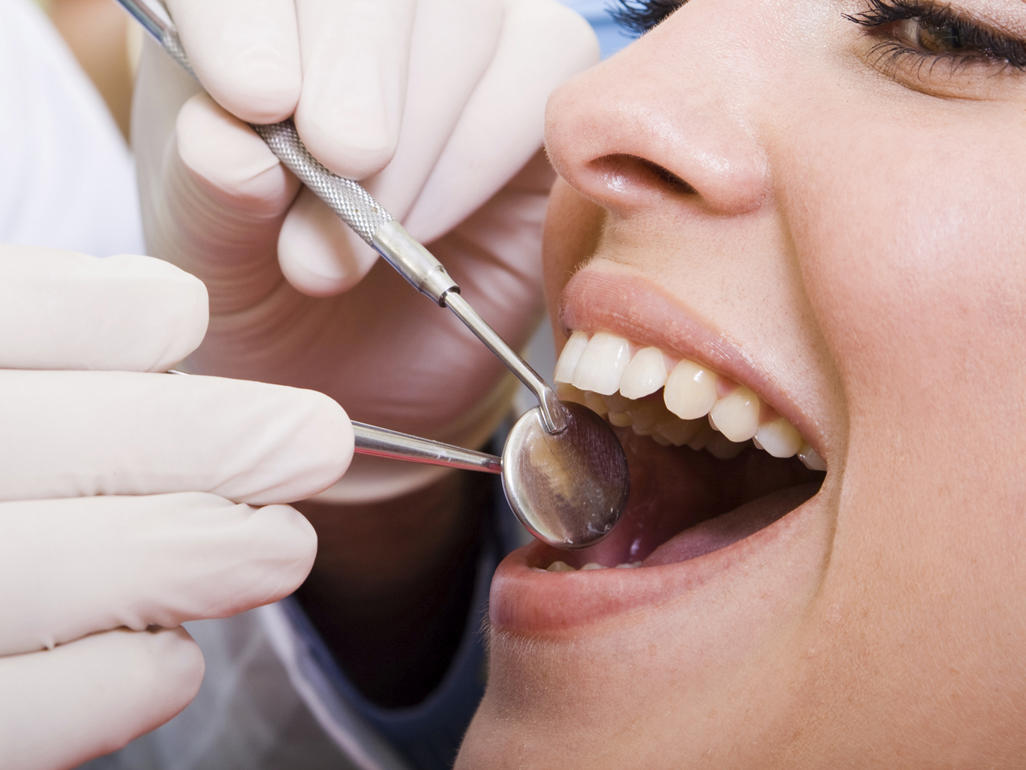 imagesource
imagesource
Dental care
The decaying of teeth by bacteria and other fermentation of starch within the teeth can be prevented by adequately caring for the teeth. The teeth can therefore be cared for in the following ways;
The teeth should be cleaned with tooth brush and tooth paste twice a day.
- Stains due to eating kola or tobacco or smoking can be removed by using hydrogen peroxide to wash the mouth.
- Vitamins and mineral containing food such as green vegetables, fresh fruits, butter, cheese, milk, eggs should be taken
regularly. - Sugary foods and drinks like sweet, ice cream, soft drinks e.t.c. should be avoided because bacteria feed on sugar and in the process turn them into acid which attacks the teeth.
- The dentist should be visited regularly for check-up at least twice in a year.
- Artificial teeth should always be removed and washed with germicide solution after each meal.
- Misuse of teeth such as cracking of large bones that may cause damage to the enamel should be avoided.
Thanks for reading I really took my time in writing this I've been on it for over a week hope this really helps @h-unit.

Thanks for this information:
https://ibuzzing.medium.com/the-retention-phase-in-orthodontic-treatment-638c6aae62ff
https://www.bloglovin.com/@deepakgupta63/what-is-an-orthodontic-retainer
https://canvas.umn.edu/eportfolios/6596/Lifestyle/Why_Orthodontic_Retainers_Are_Important_After_Braces
https://iu.instructure.com/eportfolios/30895/Health/What_Are_Dental_Retainers_And_Why_Are_They_Necessary
https://ko-fi.com/post/Everything-That-You-Must-Know-About-Dental-Retaine-K3K64439U
https://whatmatters.site123.me/blog/what-are-the-benefits-of-using-dental-retainers
https://learnwordpress.uwm.edu/dailygeeks/fixed-vs-removable-dental-retainers/
https://canvas.yc.edu/eportfolios/4950/Health/The_Convenience_Of_Using_Retainers_After_Orthodontics
https://www.vingle.net/posts/3639800
https://www.open.edu/openlearncreate/mod/oublog/viewpost.php?post=2396
Cheers!